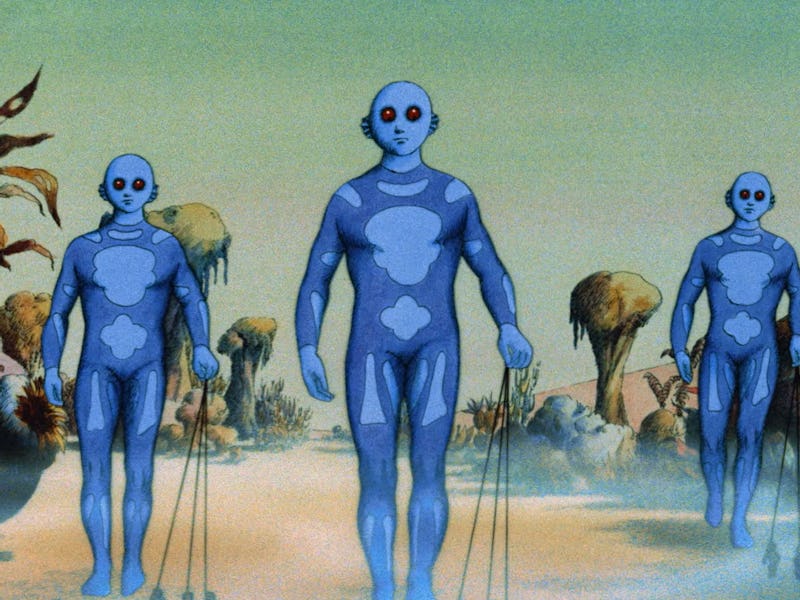René Laloux’s Surreal Sci-Fi Masterpiece Still Resonates Today
It also inspired a modern Nintendo classic.

The most important science fiction trilogy ever made has nothing to do with Luke Skywalker. Throughout the 1970s and ’80s, one director released a trio of incredible movies that pushed the limits of the genre, and it all started with his best-known work: a far-out story of humans trapped as pets on a planet ruled by giant blue aliens — and their struggle to resist their oppressors and reclaim their freedom.
Fantastic Planet is legendary French animator René Laloux’s magnum opus. The 1973 film is a kaleidoscope of beautiful trippy imagery, all wrapped up in a potent allegory that’s still relevant 50 years after its release.
Written by Laloux and his frequent collaborator, Roland Topor, Fantastic Planet premiered at Cannes 1973 (where it won the Grand Prix special jury prize) before arriving in French theaters on December 6. It’s since become a cult classic and was even ranked the 36th greatest animated movie ever made in a 2016 article from Rolling Stone.
The plot of Fantastic Planet is both simple and mind-blowing. (It’s the kind of thing you might watch at 1 a.m. in your college dorm after eating too many brownies.) The story takes place primarily on the planet Ygam, which is home to giant blue humanoid creatures called Traags. Before the movie begins, the Traags travel to Earth and bring back humans (called Oms in a play on the French word for men, “hommes”) to keep as pets. While some humans live a life of kept subservience, others escape and live in the wild jungles of Ygam.
Could you live your life as a pet to a giant blue alien?
The only problem, at least from the Traags’ perspective, is that Oms reproduce much faster than they do. To avoid becoming overwhelmed by the tiny creatures, the blue humanoids regularly cull the herd, so to speak, by slaughtering humans to control the population. At the time, people described Fantastic Planet as an allegory for the civil rights movement in America, South African apartheid, Algeria’s fight for freedom from the French, and even the Holocaust (Topor was Jewish and his parents were Polish refugees).
Unfortunately, 50 years later, the Fantastic Planet’s story of violent oppression and futile resistance still resonates. There’s no shortage of ongoing examples that prove humanity still hasn’t learned the lessons of the 20th century’s darkest chapters.
I told you this movie was trippy.
But Fantastic Planet isn’t a documentary or even a drama. It’s a science fiction movie, and things quickly take a turn for the bizarre. When the free Oms gain access to Tragg technology, they hatch a plan to escape to the planet’s moon. There, they begin to destroy important statues that are vital to Tragg survival. Using this new position of power, the Oms manage to forge a peace treaty and take up residence on a satellite orbiting the planet.
In real life, we can’t solve our problems by sending entire populations into space, but Fantastic Planet’s hopeful ending does suggest that maybe one day we can all find a way to co-exist in peace, even if it takes another 50 years.
The hand-drawn animation from Prague-based Jiří Trnka Studio (founded by a famous puppet maker) is a sight to behold.
On a lighter note, I’ll leave you with this quote from Nintendo video game director Shigefumi Hino, who revealed how Fantastic Planet influenced Pikmin 4:
Nintendo games up to that point were strongly associated with the bright and vibrant designs of the Super Mario and the Legend of Zelda series. That’s why I wanted to take a bold step and depict a somber, mature, and mysterious world. So, we said, “Let’s watch a movie together for inspiration!” and the choice was an animated movie called Fantastic Planet (4). We all had puzzled looks on our faces while watching it.